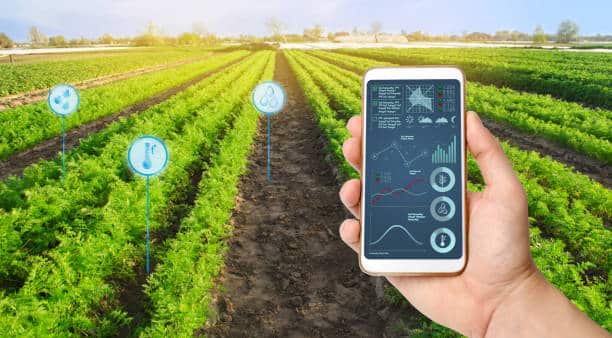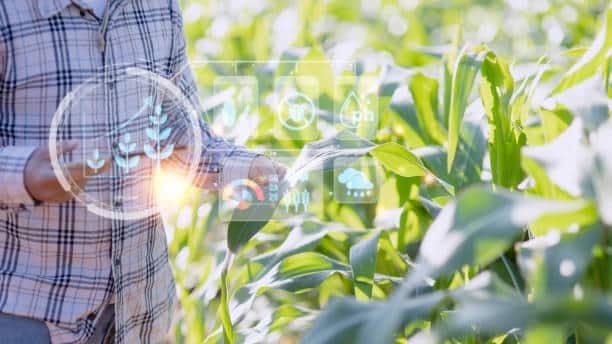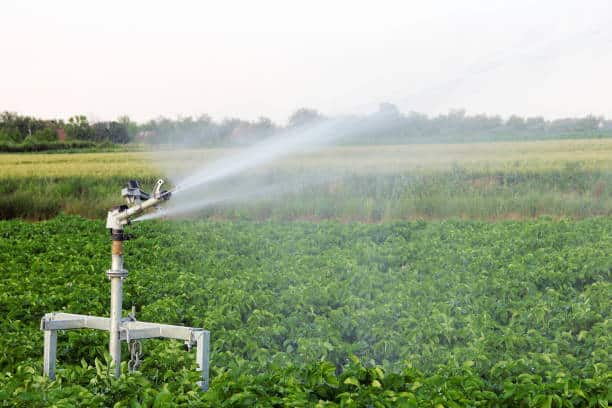Introduction
Smart Irrigation Systems Like many other sectors, agriculture has been profoundly affected by the rise of big data. Big data is an important factor in improving agricultural efficiency in this age of technology interacting with conventional farming methods. Farmers may improve decision-making, resource utilisation, and output by tapping into massive volumes of data gathered from many sources. This article explores the many ways big data is changing the face of agriculture, from revolutionising farming techniques to making supply chain management more efficient and even helping the industry become more sustainable.
Agricultural Big Data: A Comprehensive Overview

Sensors, drones, satellite imaging, GPS-enabled equipment, and other precision agriculture instruments generate massive amounts of data, which is referred to as “big data” in the agriculture industry. Included in this data set are details regarding market tendencies, weather patterns, soil health, crop development, and pest infestations. Farmers are able to make better, more timely decisions by analysing these varied data sets. A major departure from conventional wisdom is evident in the incorporation of big data into agricultural operations, which place an emphasis on data-driven decision-making rather of relying solely on gut feelings and past experience.
An Approach to Precision Agriculture Based on Data
A prime example of how big data is revolutionising farming is precision agriculture. This method optimises crop farming field management through the use of data analytics. The use of global positioning systems (GPS), remote sensing, and IoT devices allows for the collection of data regarding weather, crop health, soil quality, and equipment efficiency.
Practical insights are derived from the subsequent data analysis. Farmers can learn a lot from this, like when to plant seeds, how much water to water, and how much pesticide and fertiliser to use. By making sure resources are used efficiently, precision agriculture decreases costs, maximises crop yields, and minimises waste.
Using Big Data to Improve Crop Management
Another crucial area where big data has a revolutionary impact is crop management. Crops can be better monitored and managed when farmers have access to detailed information about soil moisture, nutrient content, and weather predictions. Preventative actions can be taken to safeguard crops by using advanced analytics to forecast insect infestations and disease outbreaks. Big data analytics can also predict crop yields, which aids farmers in harvest planning and inventory management. The ability to foresee future events makes farming safer and more lucrative by lowering the inherent risk and uncertainty in the industry.
Improving the Effectiveness of the Supply Chain
The agriculture supply chain is profoundly affected by the far-reaching advantages of big data. Farmers and agribusinesses can improve efficiency by studying data on storage conditions, transit logistics, and market demand. Produce is delivered in peak condition thanks to real-time tracking enabled by GPS and IoT devices. In addition to lowering transportation expenses and spoilage, big data assists in determining the most cost-effective transportation routes and methods. Both farmers and shoppers stand to gain from better supply chain management, which increases profits and decreases food waste.
Data-Driven Sustainability in Agriculture

Big data provides practical answers to the rising issue of sustainability in agriculture. Farming has less of an effect on the environment because to big data, which helps optimise resource utilisation. For example, by use soil moisture data to guide irrigation, water is not wasted, and chemical runoff into water bodies is minimised by targeted fertiliser application. Better land management practices are made possible by big data, which monitors soil health and suggests crop rotations and cover crops to keep soil fertility high. In addition to preserving agricultural land for future generations, these sustainable approaches minimise negative impacts on the environment.
Utilising Big Data for Livestock Managers
Another industry that stands to gain from big data integration is the livestock sector. Wearable sensors and sensors implanted in animals record vital signs like pulse rate, temperature, and gait. The real-time monitoring of livestock health and welfare is made possible by this data for farmers. The use of data analytics for early disease identification has the potential to improve overall productivity, decrease mortality rates, and open up new avenues for treatment. Livestock farming may be made more efficient and profitable with the help of big data, which can optimise breeding programmes and feeding schedules.
Overcoming Obstacles in Big Data Implementation
There are a lot of obstacles to overcome when using big data in farming, despite all the advantages. For small-scale farmers, the high cost of new technologies and data analytics tools is a major obstacle. Data storage facilities and high-speed internet are other needed, but they could be hard to come by in more remote places. Additionally, there is a need to safeguard sensitive information regarding agricultural methods and crop production, which raises concerns about data privacy and security. Governments, technology providers, and the farming community must work together to tackle these difficulties and guarantee that big data technologies are accessible to all.
Real-Life Examples: How Big Data Has Revolutionised Agriculture
The use of big data has been fruitful in a number of agricultural case studies. Case in point: Monsanto’s Climate FieldView platform, which combines information from multiple sources to give farmers useful insights about crop health, weather, and performance. One such example is the precision agriculture solutions offered by John Deere. These solutions optimise the use of machinery and increase crop yields through the utilisation of data analytics. These real-life examples of big data’s positive effects highlight the technology’s promise to transform farming methods and boost productivity industry-wide.
What Big Data Means for the Future of Farming

With technology constantly improving, the use of big data in agriculture is only going to grow in the future. Data analytics are predicted to become more advanced, with deeper insights and more accurate suggestions, thanks to emerging developments like machine learning (ML) and artificial intelligence (AI). More granular data will be generated by the spread of IoT devices, which will allow farmers to manage and oversee their operations with unprecedented precision. More and more farmers will be using big data to improve their operations’ efficiency and sustainability as these technologies are cheaper and easier to acquire.
Conclusion
Finally, farmers are able to optimise their operations with the help of big data, which is revolutionising agriculture. There is a wide range of fields that can benefit from big data, including sustainable practices, supply chain efficiency, precision agriculture, and crop management. Cost, infrastructure, and data security are still major concerns, but the advantages might be substantial.
Increased productivity, profitability, and sustainability are on the horizon as the agricultural industry fully embraces the data-driven revolution. This will guarantee that agriculture can keep up with the needs of a world that is changing at a rapid pace.

